Can a Pug Eat Pineapple?
Date Published: February 16, 2024 | Last Modified: February 17, 2024
Before we delve into the topic at hand, let's establish a crucial fact - pugs absolutely can enjoy the delicious tropical fruit that is pineapple! In this article, we will explore the potential health benefits of pugs indulging in pineapple, as well as weigh the pros and cons of incorporating this fruit into their diets. We'll also address any safety concerns you may have, touching on whether pineapple is toxic to pugs and if it can be beneficial for them. So, if you've ever wondered about sharing your pineapple snack with your four-legged companion, you're in the right place!
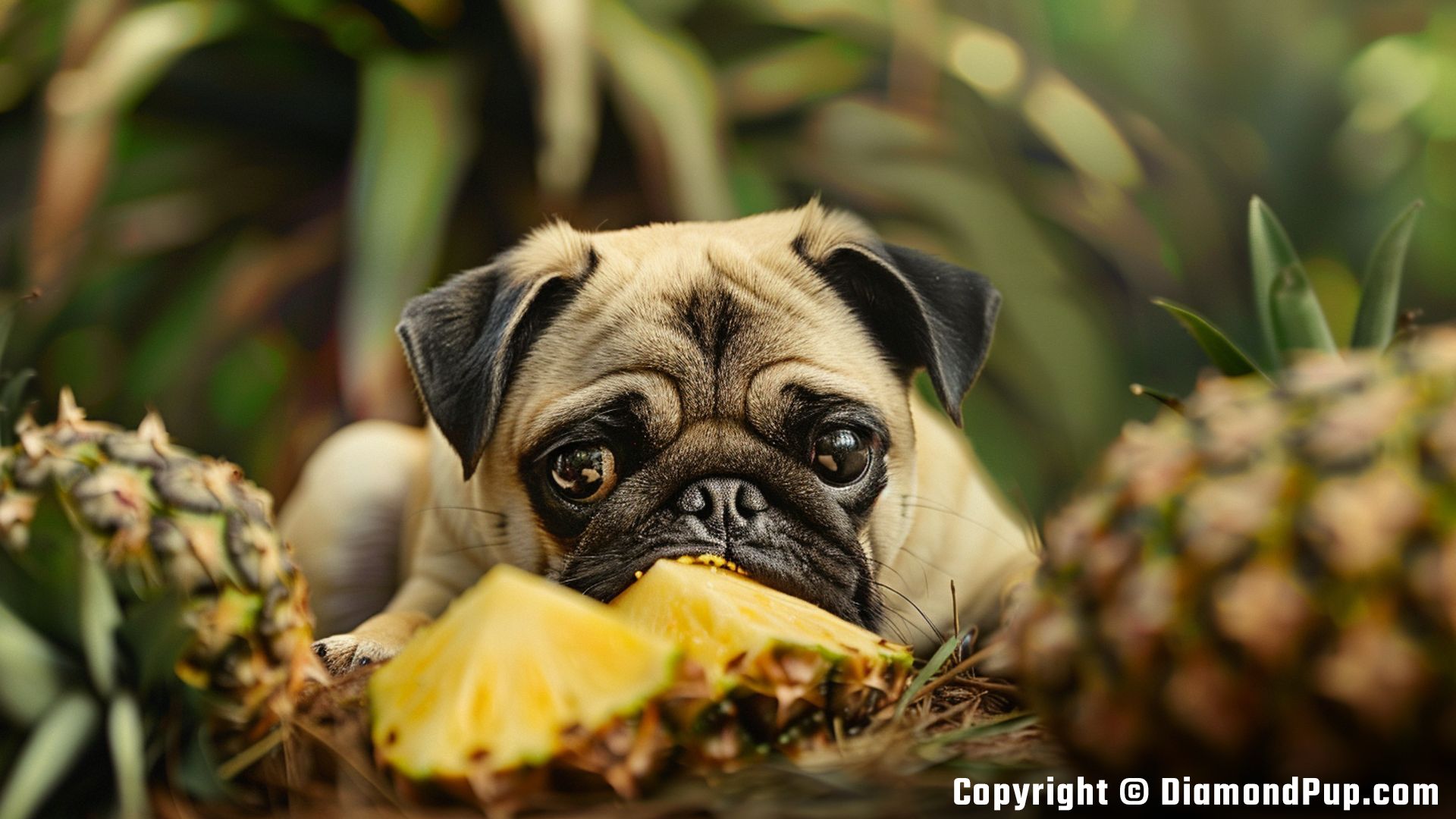
Are Pineapples Good for Pugs?
Yes, pineapples can be good for pugs when fed in moderation. This tropical fruit is high in essential vitamins such as vitamin C, which can help support the immune system of your pug. Pineapples also contain bromelain, an enzyme that may aid in digestion by breaking down proteins. However, it's important to remember that pugs have sensitive stomachs, so introducing pineapple slowly and in small amounts is recommended to avoid any potential stomach upset.
When choosing pineapples for your pug, opt for fresh pineapple pieces without any added sugars or artificial sweeteners. Avoid canned pineapples packed in syrup, as the extra sugar content can be harmful to your pug's health. Additionally, always ensure to remove the tough core and prickly skin of the pineapple to prevent choking hazards or digestive issues for your pug.
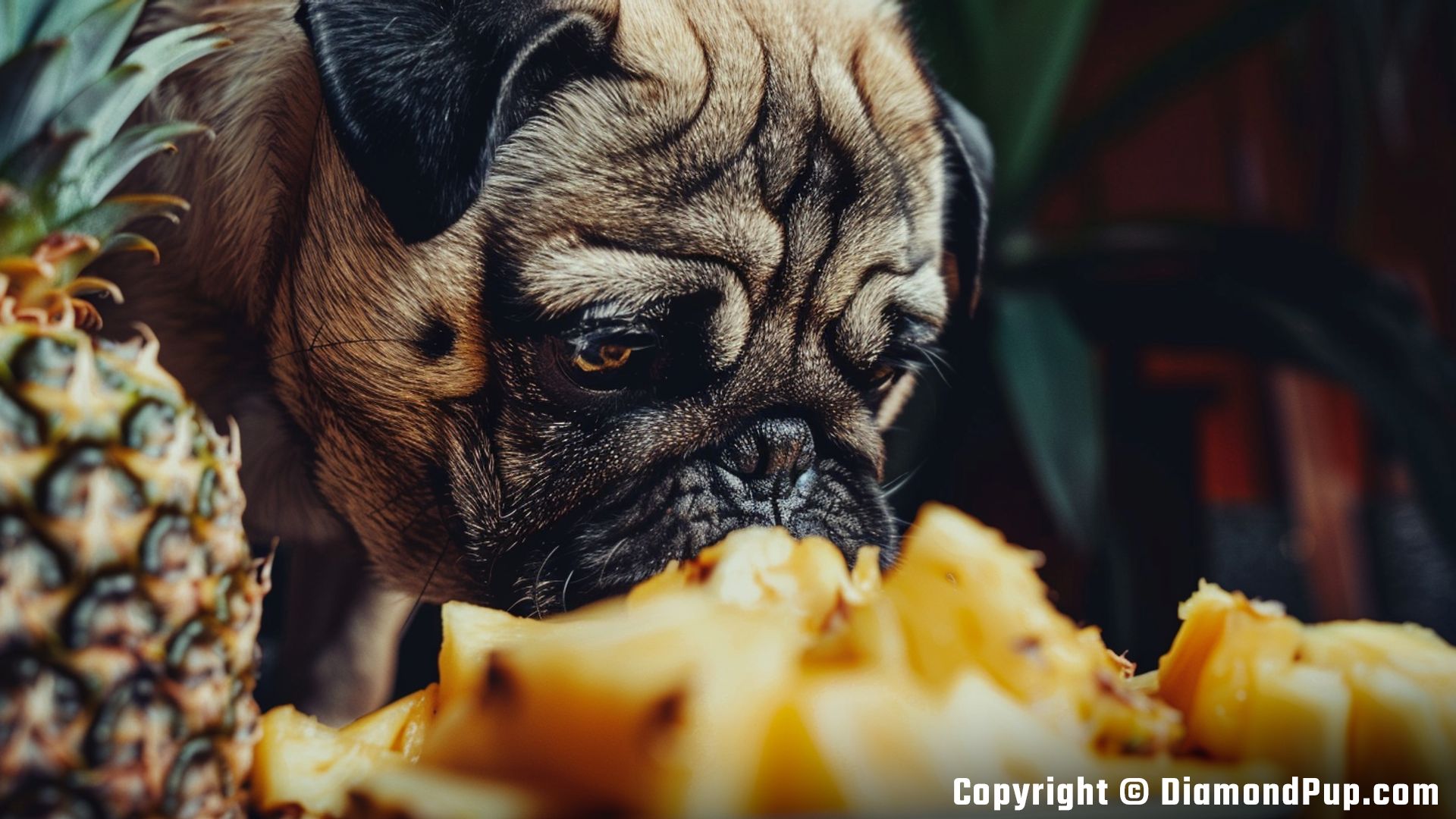
Understanding the Benefits of Pineapples for Pugs
One of the key benefits of feeding pineapples to pugs is the high content of essential vitamins and minerals, such as vitamin C, vitamin B6, thiamine, riboflavin, and folate. These nutrients play a vital role in supporting your pug's overall health, immune system, and energy levels. Additionally, pineapples contain bromelain, an enzyme that can aid in digestion by breaking down proteins and promoting gut health.
However, it's important to note that while pineapples can be a nutritious and tasty treat for pugs, they should be fed in moderation. The high fiber content in pineapples might cause digestive upset or diarrhea if consumed in large amounts. So, be sure to offer pineapples to your pug as an occasional snack rather than a regular part of their daily diet to reap the benefits without any negative side effects.
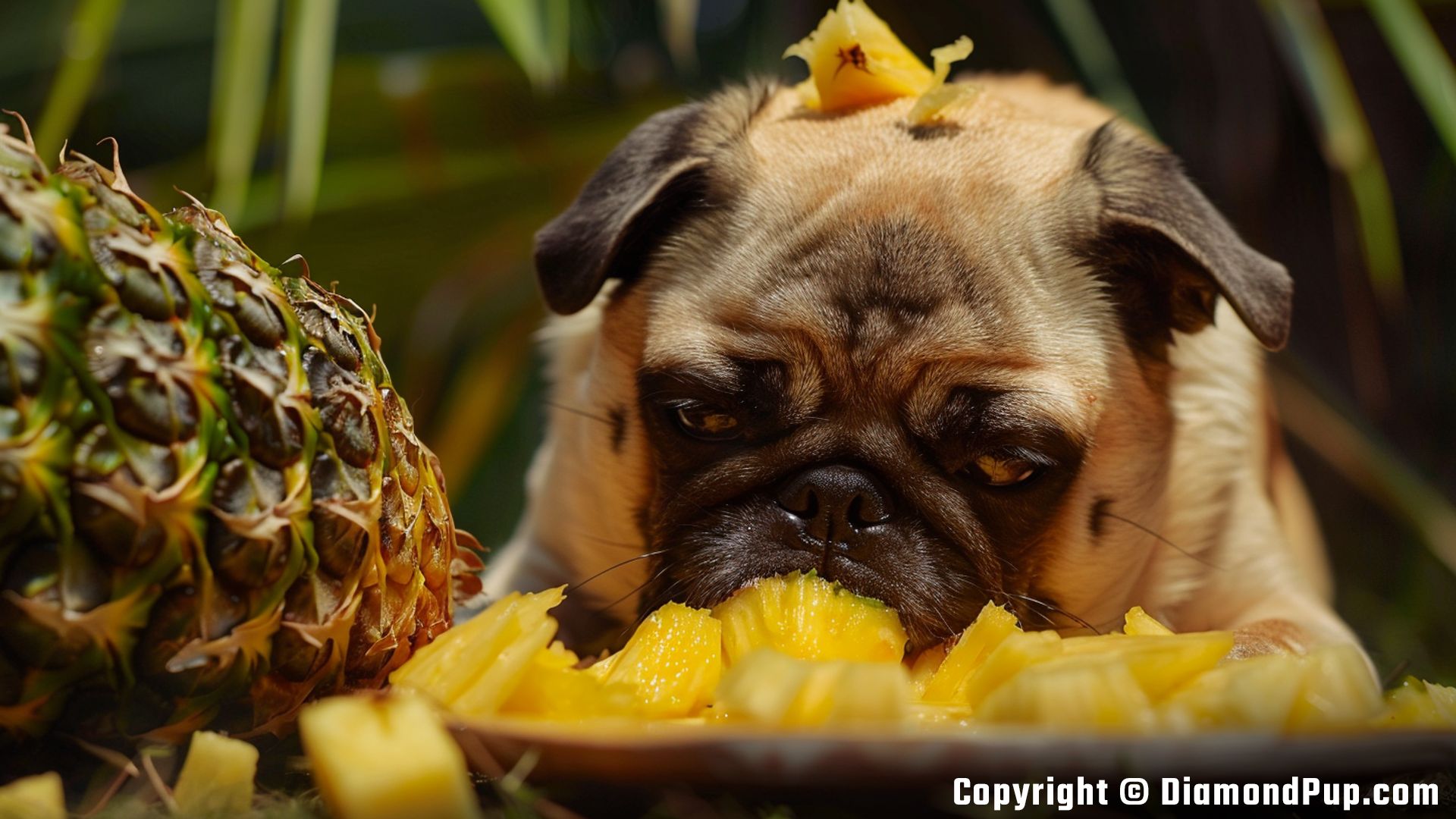
Nutritional benefits of Pineapples for Pugs
One of the key nutritional benefits of feeding pineapples to Pugs is their high vitamin C content. Vitamin C is essential for supporting the immune system and promoting overall health. Additionally, pineapples contain bromelain, an enzyme known for its anti-inflammatory properties, which can be beneficial for Pugs, especially those prone to allergies or joint issues.
When choosing pineapples for your Pug, opt for fresh pineapple over canned varieties to avoid added sugars or preservatives that can be harmful to your furry friend. Remember to serve pineapples in moderation as a treat, making sure to cut them into bite-sized pieces to prevent choking hazards. Overall, incorporating a small amount of pineapple into your Pug's diet can be a tasty and nutritious addition to support their well-being.
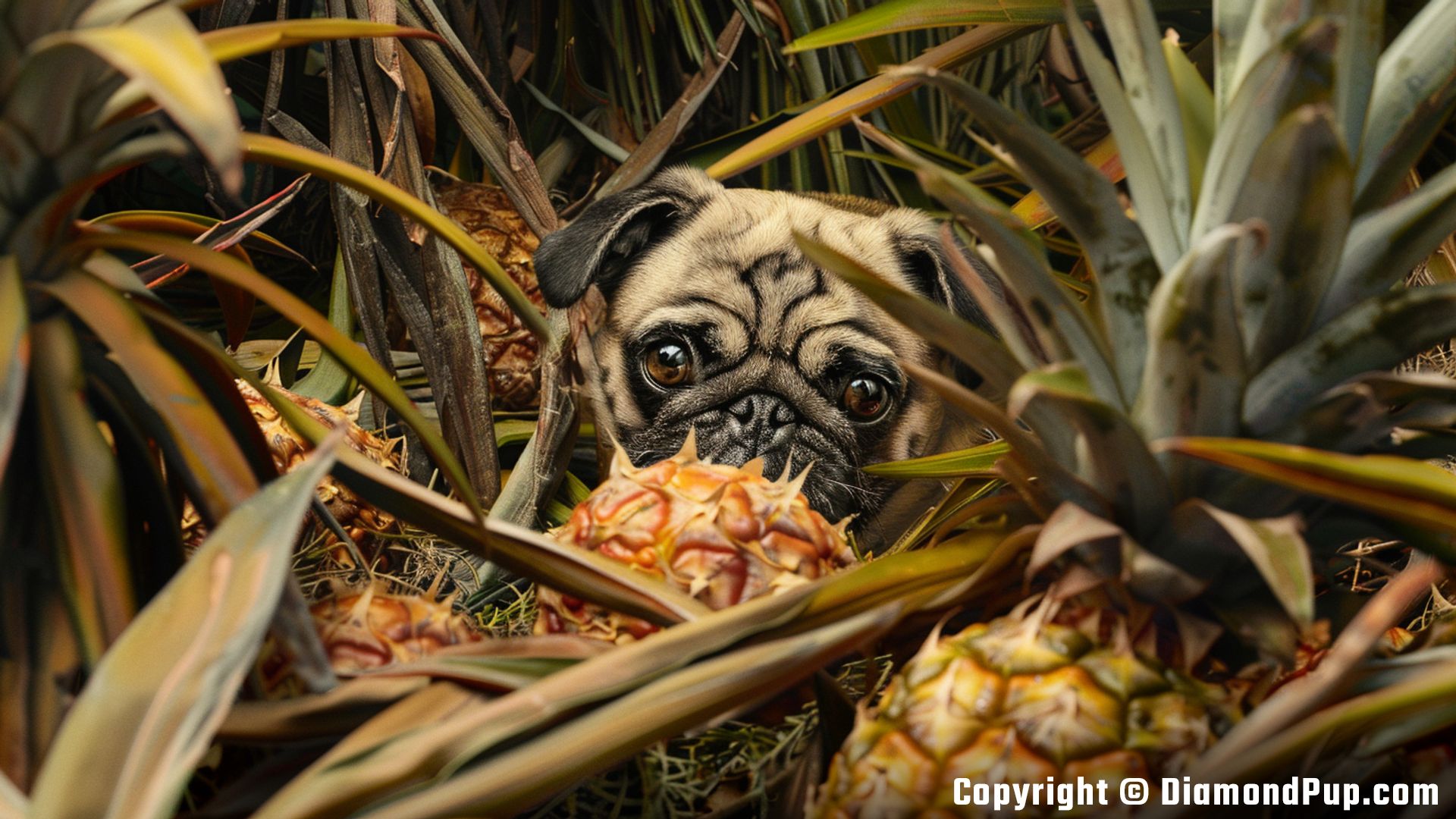
Safely Introducing Pineapples to Your Dog's Diet
When introducing pineapples to your Pug's diet, it's important to start slowly and in moderation. Begin by offering small, bite-sized pieces of fresh pineapple as a treat or mixed with their regular food. Monitor your Pug for any signs of digestive upset, such as diarrhea or vomiting. If your Pug tolerates the pineapple well, you can gradually increase the amount over time.
Remember to remove the tough outer skin, prickly core, and any tough areas before feeding pineapple to your Pug, as these parts can be difficult for them to digest. Additionally, be mindful of the sugar content in pineapple, as too much can lead to weight gain and other health issues. Always consult with your veterinarian before making any significant changes to your Pug's diet to ensure it is safe and appropriate for their individual needs.
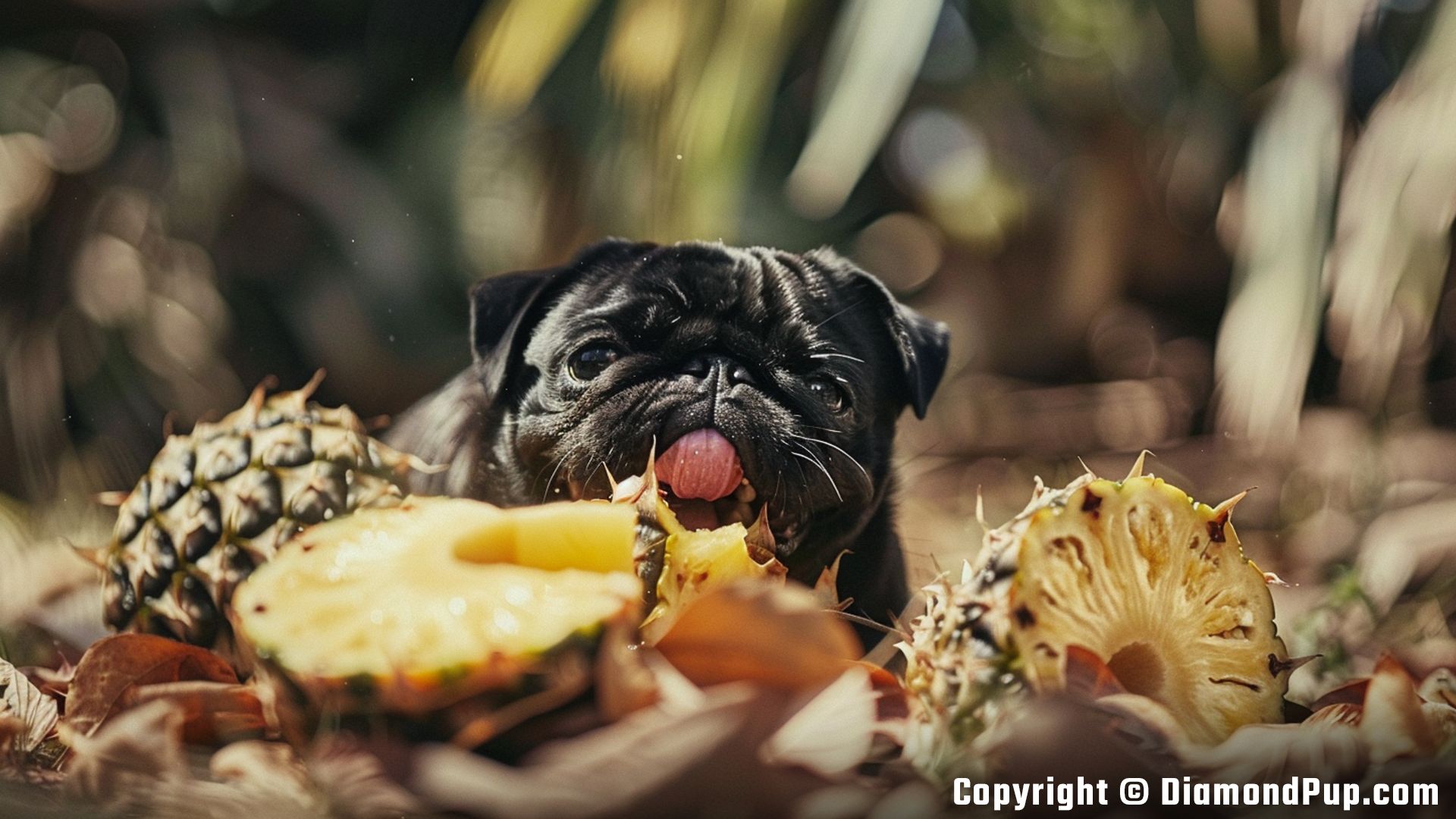
How much pineapple can a dog eat safely?
When it comes to feeding your pug pineapple, moderation is key. While pineapple can be a healthy treat for your furry friend, too much of it can lead to gastrointestinal upset due to its high fiber content. I recommend starting with small amounts of fresh pineapple, gradually introducing it into your pug's diet to see how their digestive system reacts.
For a pug weighing around 14-18 pounds, feeding them about 1-2 small pineapple chunks per day should be a safe amount. It's important to monitor your pug for any signs of stomach upset, such as diarrhea or vomiting, and adjust the portion size accordingly. Remember, every dog is different, so always consult with your veterinarian before making any significant changes to your pug's diet.
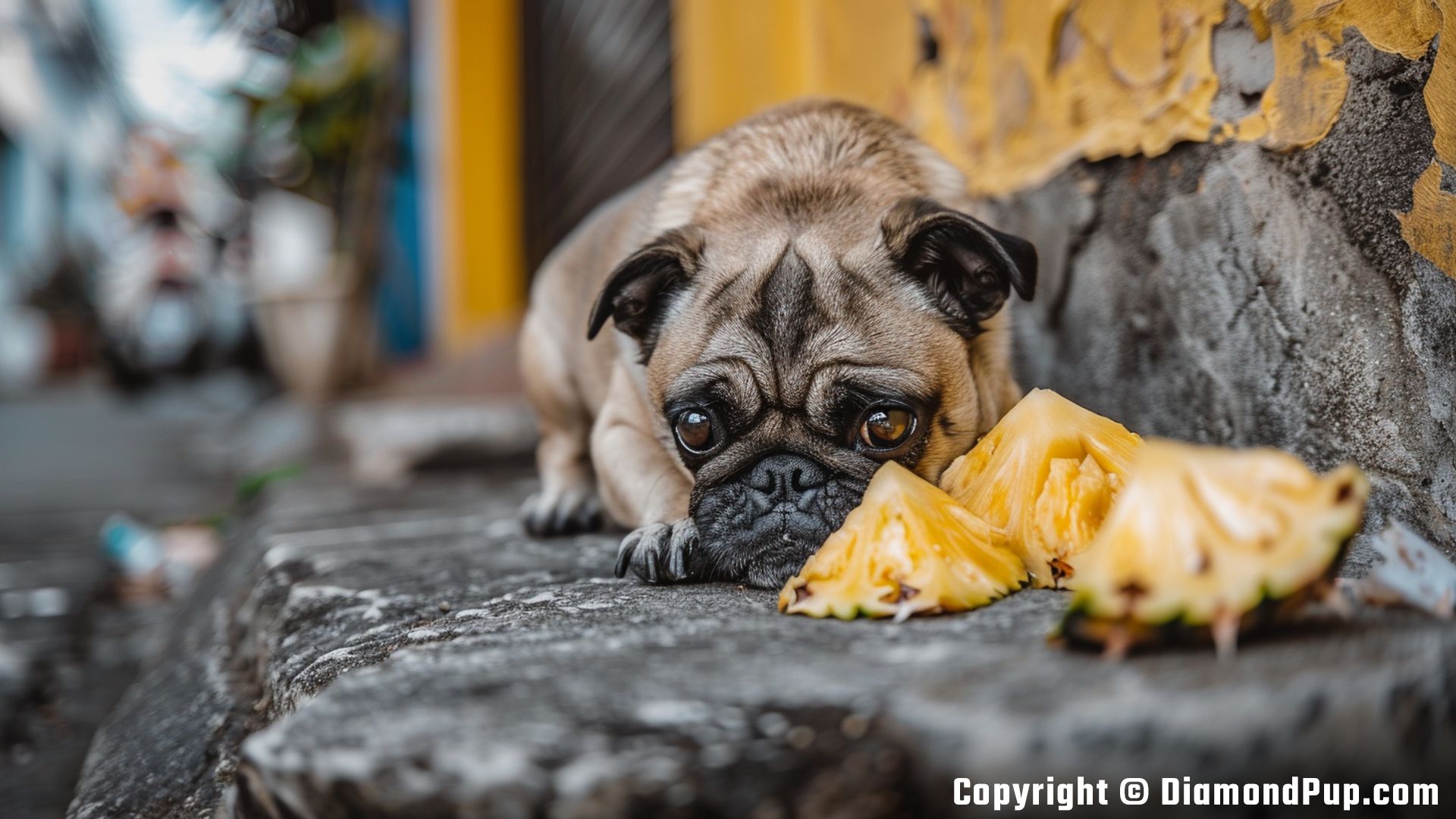
Tips to Remember When Feeding Your Dog Pineapples
When feeding your pug pineapple, it's important to remember a few key tips to ensure their safety and wellbeing. Firstly, always remove the tough, prickly outer skin of the pineapple as it can be difficult for your pug to digest and may pose a choking hazard. Secondly, make sure to cut the pineapple into small, bite-sized pieces to prevent any choking risks or digestive issues. Additionally, it's essential to start with small amounts of pineapple to gauge your pug's reaction and avoid any potential stomach upset or allergies.
Lastly, remember that pineapple should only be given to your pug as an occasional treat and not as a regular part of their diet. While pineapple can provide some health benefits, such as being a good source of vitamin C and fiber, it should not replace their balanced and complete dog food. Always consult with your veterinarian before making any significant changes to your pug's diet to ensure it aligns with their specific nutritional needs.

Feeding Your Dog Pineapples
When it comes to feeding your Pug pineapples, it's important to do so in moderation. Pineapples are a great source of essential nutrients such as vitamin C, fiber, and antioxidants, which can benefit your Pug's overall health. However, too much pineapple can lead to digestive upset due to its high fiber content. It's best to start by offering small amounts of fresh pineapple as an occasional treat to see how your Pug tolerates it.
When serving pineapple to your Pug, make sure to remove the tough outer skin and core, as these parts can be difficult for them to digest. Opt for fresh pineapple over canned or sugary varieties, as the added sugars can be harmful to your Pug's health. Remember, always consult with your veterinarian before making any significant changes to your Pug's diet, including introducing new foods like pineapple.
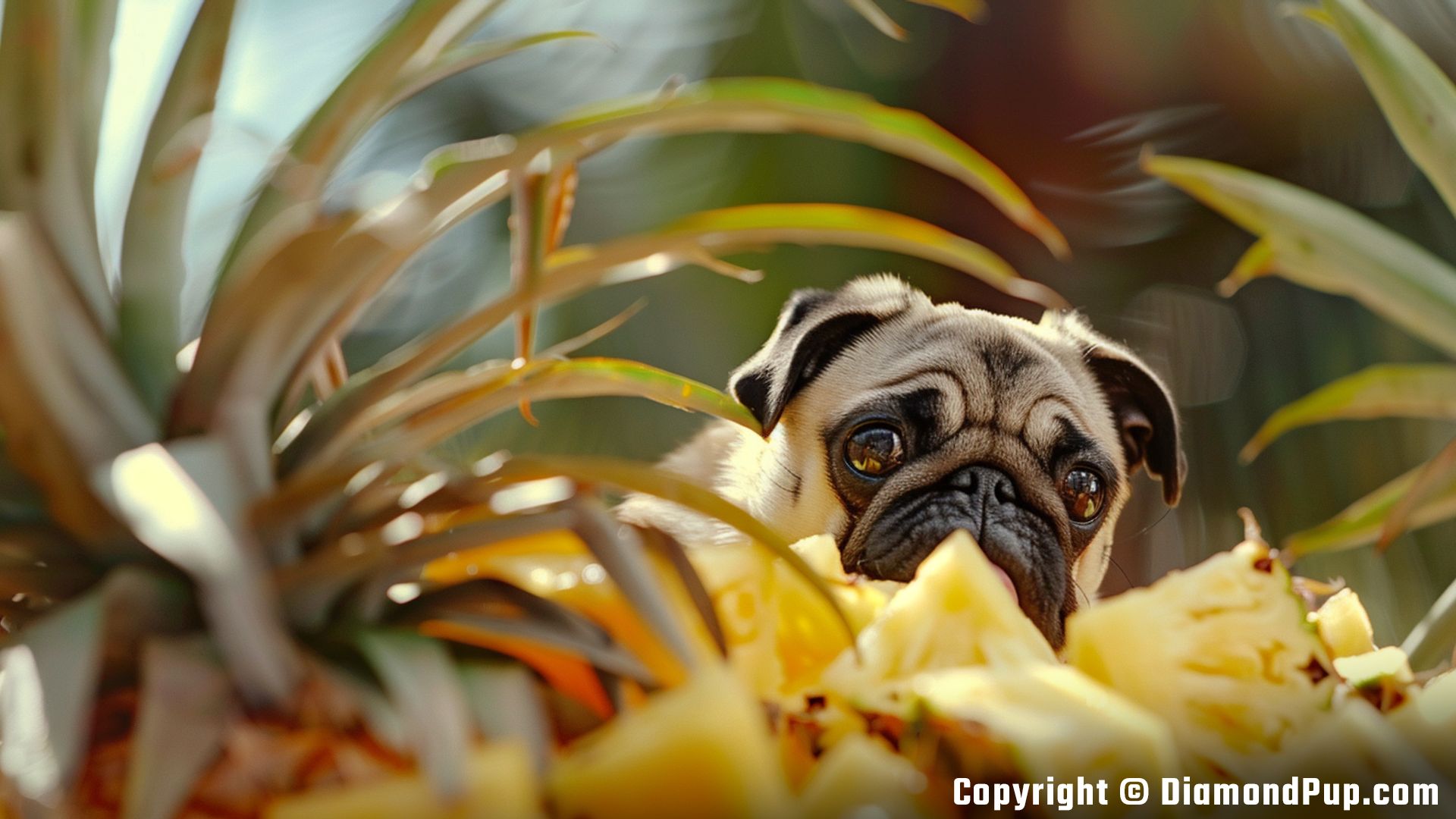
How to properly feed your dog Pineapples
When it comes to feeding your pug pineapples, there are a few key things to keep in mind. Firstly, it's important to offer them fresh pineapple in moderation. Too much pineapple can lead to digestive issues due to its high fiber content. Start by giving small amounts and monitor how your pug reacts before increasing the quantity.
Additionally, make sure to remove the tough skin and prickly core of the pineapple before feeding it to your pug. These parts can be difficult for them to digest and may pose a choking hazard. Opt for fresh pineapple over canned ones, as canned pineapples often contain added sugars and preservatives that are not ideal for your pug's health.
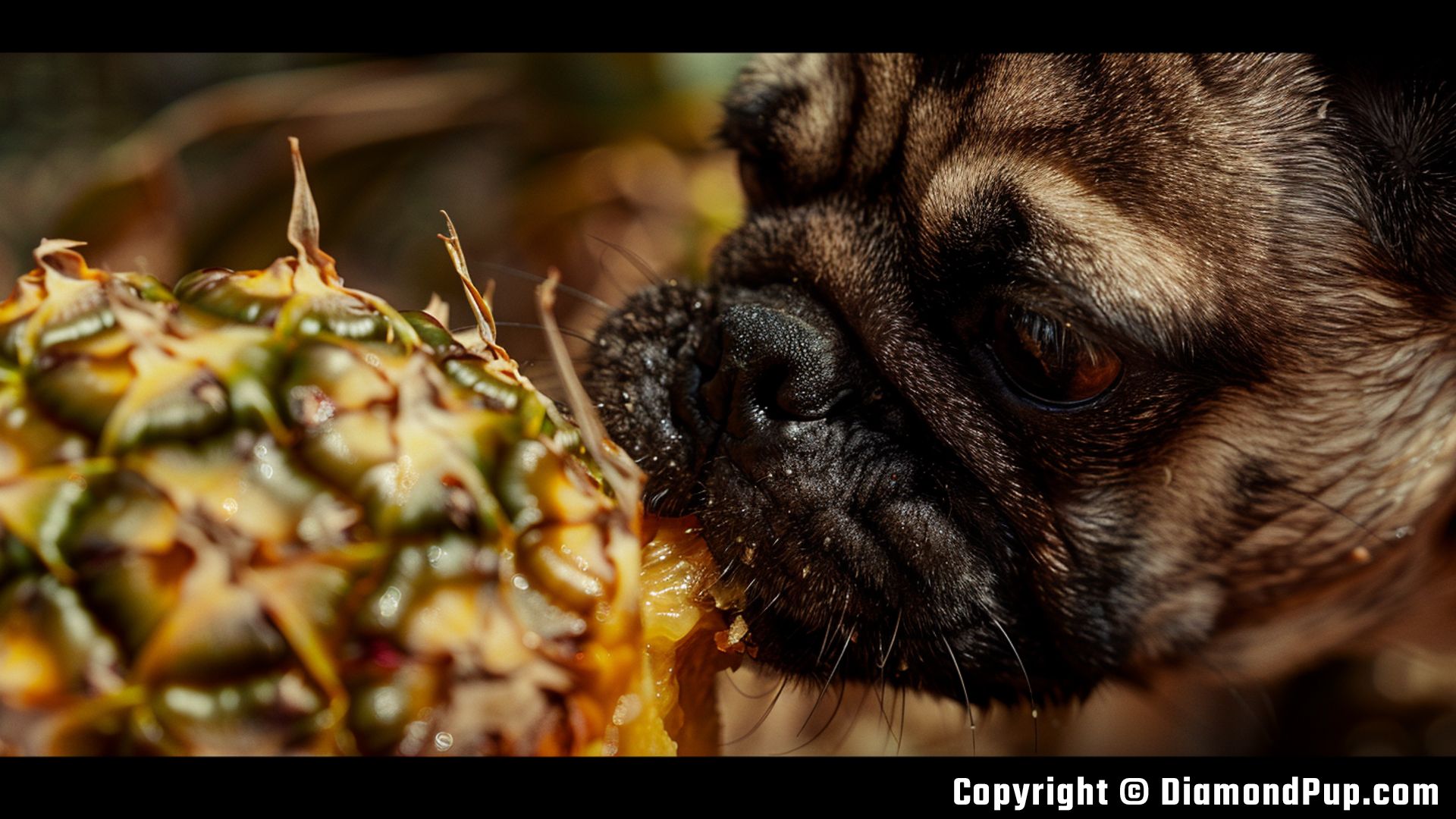
Do Pugs Like Pineapples?
Given their curious and often food-driven nature, pugs may indeed enjoy the taste of pineapple. This breed is known for its love of food and willingness to try new flavors, making pineapple a potentially exciting addition to their diet. However, it's important to introduce this fruit gradually to monitor how your Pug reacts to it.
Some Pugs may find the sweetness of pineapple appealing, while others may not be as enthusiastic. As with any new food, it's essential to observe your pet's response and ensure they don't develop any digestive issues or allergies. Remember to remove the tough outer skin and core of the pineapple, and only offer bite-sized amounts to prevent choking hazards. Overall, offering pineapple to your Pug can be a fun and tasty experience, as long as it is given in moderation and is well-tolerated by your furry friend.
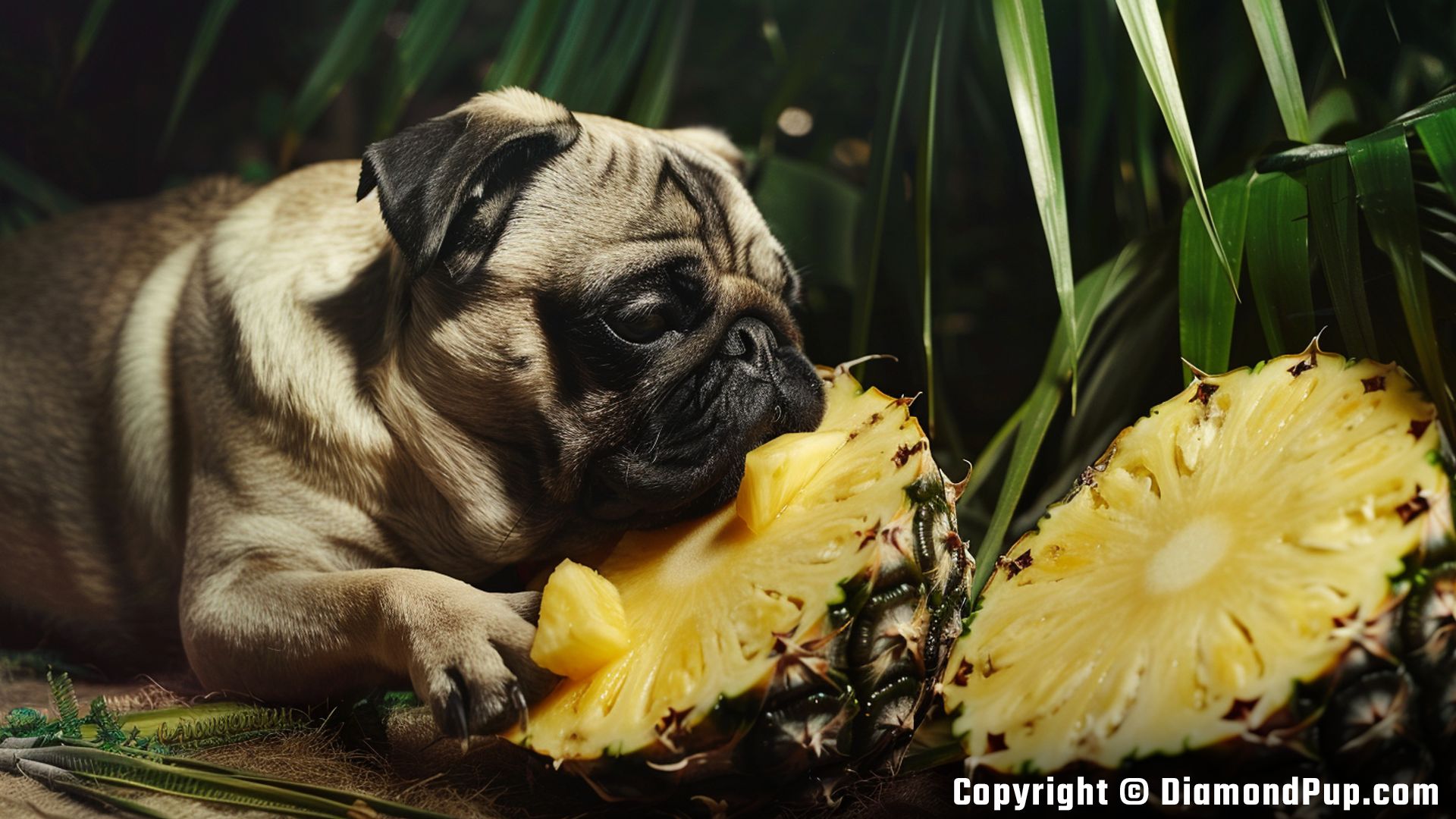
Special Consideration for Pugs
Pugs are known for their tendency to gain weight easily, which can lead to obesity and related health issues. Therefore, when considering feeding your pug pineapple, it's essential to be mindful of the sugar content in this fruit. While pineapple can be a healthy and tasty treat for pugs in moderation, excessive consumption can contribute to weight gain. As a responsible pug owner, it's crucial to balance their overall diet and calorie intake to prevent any potential health concerns.
Additionally, pugs are brachycephalic breeds, meaning they have short muzzles which can sometimes lead to breathing difficulties. To avoid any choking hazards, it's recommended to feed your pug small, bite-sized pieces of pineapple to minimize the risk of choking. By taking these considerations into account, you can safely incorporate pineapple into your pug's diet as an occasional snack or treat.
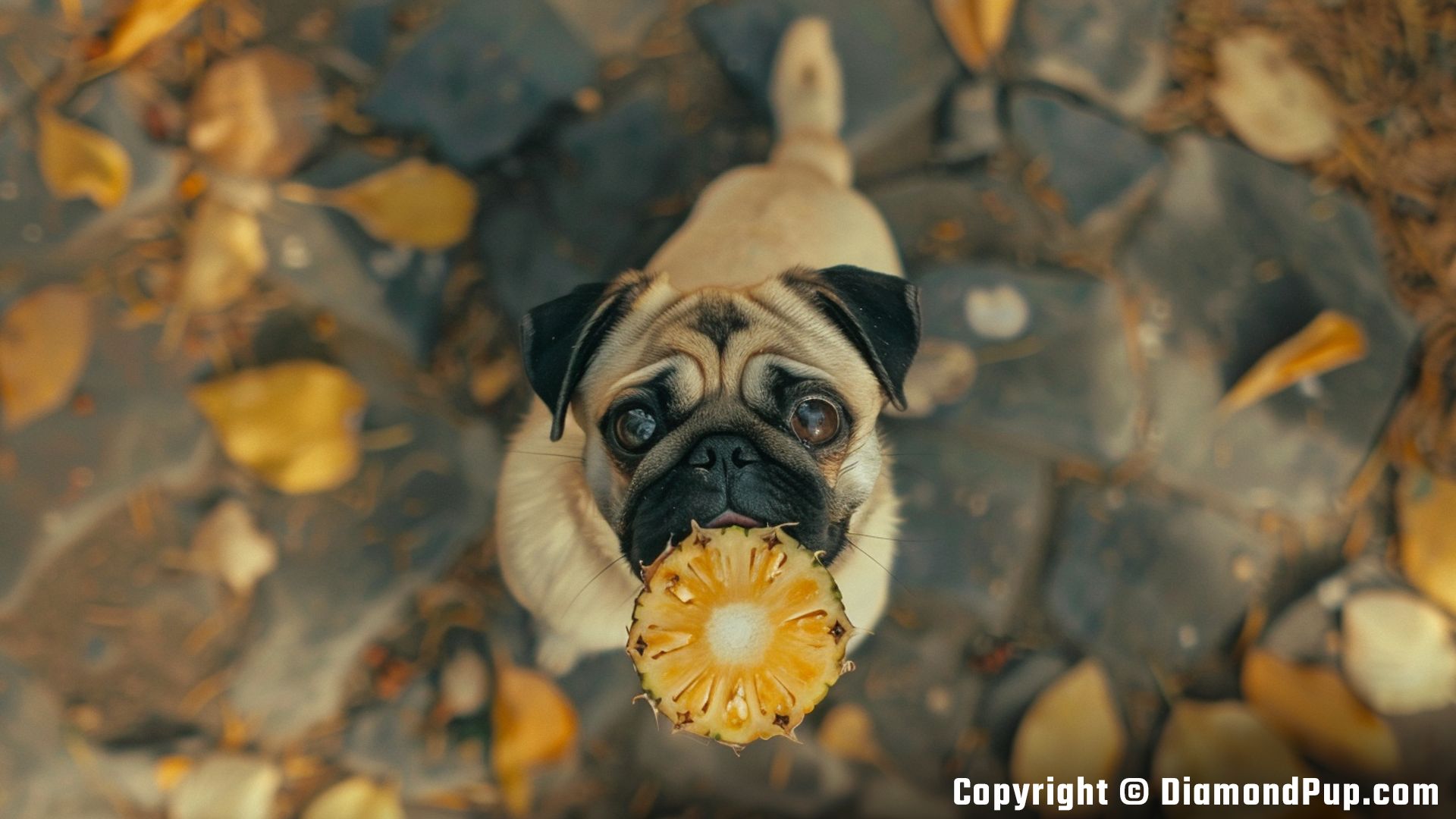
Can Puppies Have Pineapples?
When it comes to puppies, including pug puppies, pineapples can actually be a great addition to their diet! Pineapples are a good source of essential vitamins and minerals such as vitamin C, vitamin A, and manganese, which are important for a puppy's overall growth and development. However, it's crucial to introduce pineapples in moderation and ensure they are cut into small, manageable pieces to prevent any choking hazards. Additionally, it's recommended to monitor your puppy for any signs of digestive upset or allergies after introducing pineapples to their diet.
As with adult pugs, the key is balance. While pineapples can provide some nutritional benefits to your pug puppy, they should not make up a large portion of their diet. Always consult with your veterinarian before making any significant changes to your puppy's diet, including introducing new foods like pineapple. With proper moderation and supervision, your pug puppy can enjoy the occasional sweet treat of pineapple as part of a well-rounded diet.
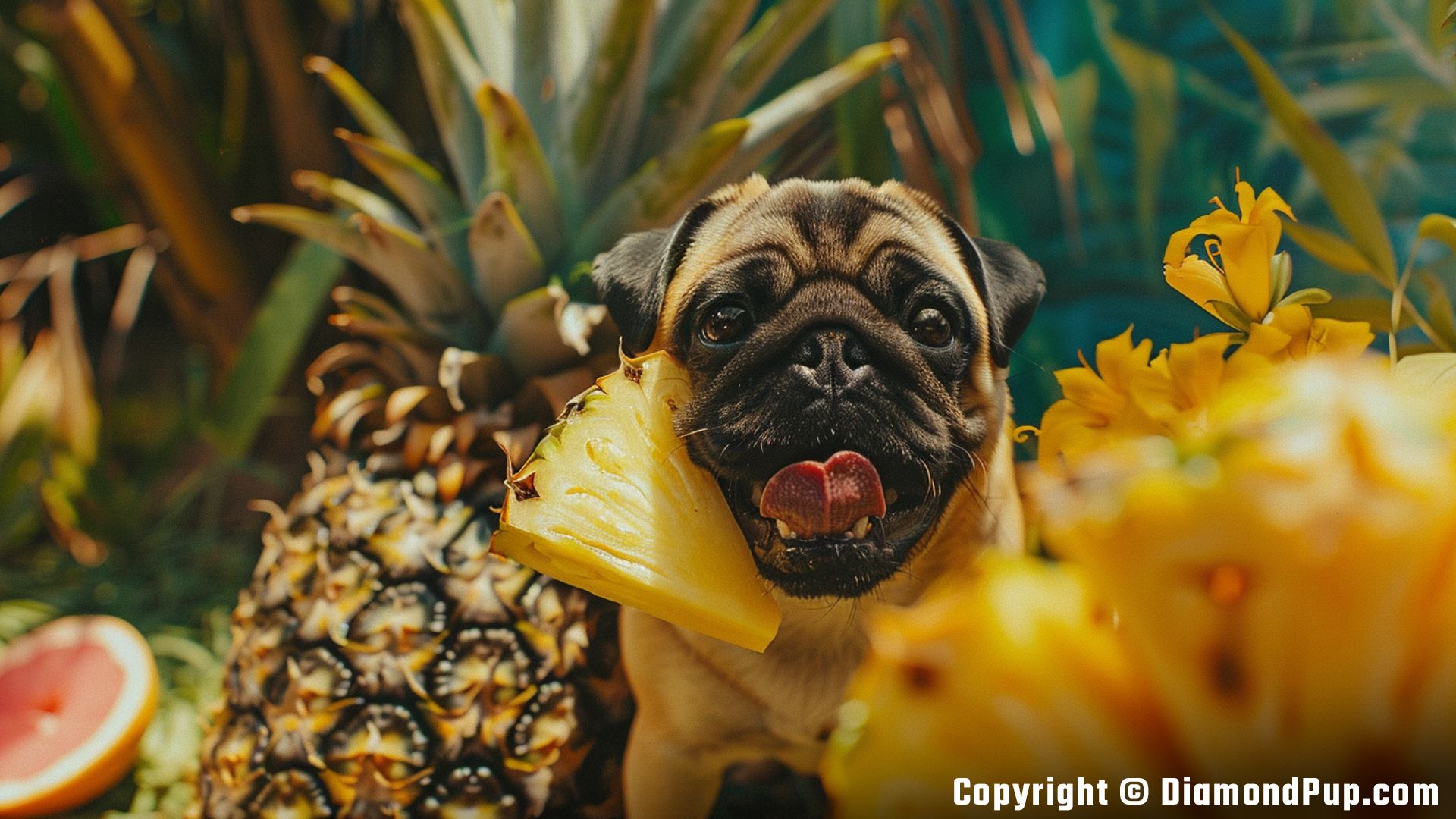
Are there any Pugs that shouldn't eat Pineapples?
While pineapples can be a delicious and nutritious treat for most pugs, there are a few exceptions to consider. Pugs with certain digestive issues, such as pancreatitis or sensitive stomachs, may not tolerate the high fiber content in pineapples very well. It's always best to consult with your veterinarian before introducing any new food to your pug's diet, especially if they have any underlying health conditions.
Additionally, some pugs may be allergic to pineapples or may experience gastrointestinal upset after consuming this fruit. Signs of an allergic reaction or intolerance include vomiting, diarrhea, or skin rashes. If you notice any of these symptoms in your pug after eating pineapple, it's best to avoid feeding them this fruit in the future and seek guidance from your vet.
Recipes for Feeding Your Dog Pineapples
When it comes to sharing pineapple with your Pug, there are a few simple and safe ways to do so. One option is to give your Pug small, bite-sized pieces of fresh pineapple as a treat. Make sure to remove the tough core and prickly skin before feeding it to your pet. Another idea is to blend fresh pineapple with other dog-friendly fruits like strawberries or blueberries to create a tasty and nutritious smoothie for your Pug to enjoy.
It's important to remember that pineapples should only be given to your Pug in moderation, as too much can lead to digestive issues due to the fruit's high fiber content. Start with small amounts and monitor how your Pug reacts to this new treat. If you notice any signs of stomach upset or changes in your Pug's stool, it's best to discontinue feeding pineapple and consult with your veterinarian for further guidance.
Alternatives to Pineapples for Pugs
While pineapples can be a delightful and healthy treat for pugs, there are also alternative options to consider in their diet. One great alternative is blueberries, which are rich in antioxidants and low in calories, making them a fantastic snack for pugs. Another option is pumpkin, which is high in fiber and can aid in digestive health for our wrinkly-faced friends. Remember to introduce these alternatives in moderation and watch for any potential digestive issues or allergies.
When choosing alternatives to pineapples for your pug, it's essential to consider their nutritional needs and preferences. Consult with your veterinarian to ensure that the alternatives you choose are safe and beneficial for your pug's well-being. By offering a variety of healthy treats, you can keep your pug's diet interesting and nutritious, while also catering to their specific dietary requirements as a unique breed.
Common Questions About Pugs and Pineapples
One common question that pug owners have regarding pineapples is whether their furry friends can safely consume the tough core of the fruit. It is recommended to remove the tough core of the pineapple before sharing it with your pug, as it can be a choking hazard and difficult for them to digest properly. Instead, opt for small, bite-sized pineapple pieces without the core for your pug to enjoy as a tasty and nutritious snack.
Another question that often arises is whether canned pineapple is a suitable alternative for pugs. It is best to avoid canned pineapple for pugs, as it often contains added sugars and preservatives that can be harmful to their health. Fresh pineapple is always the preferred option to ensure that your pug receives the maximum nutritional benefits without any unnecessary additives.
Subscribe Now
Stay updated with the latest news and articles! We'll keep you updated on the latest tips for your pet Pug
